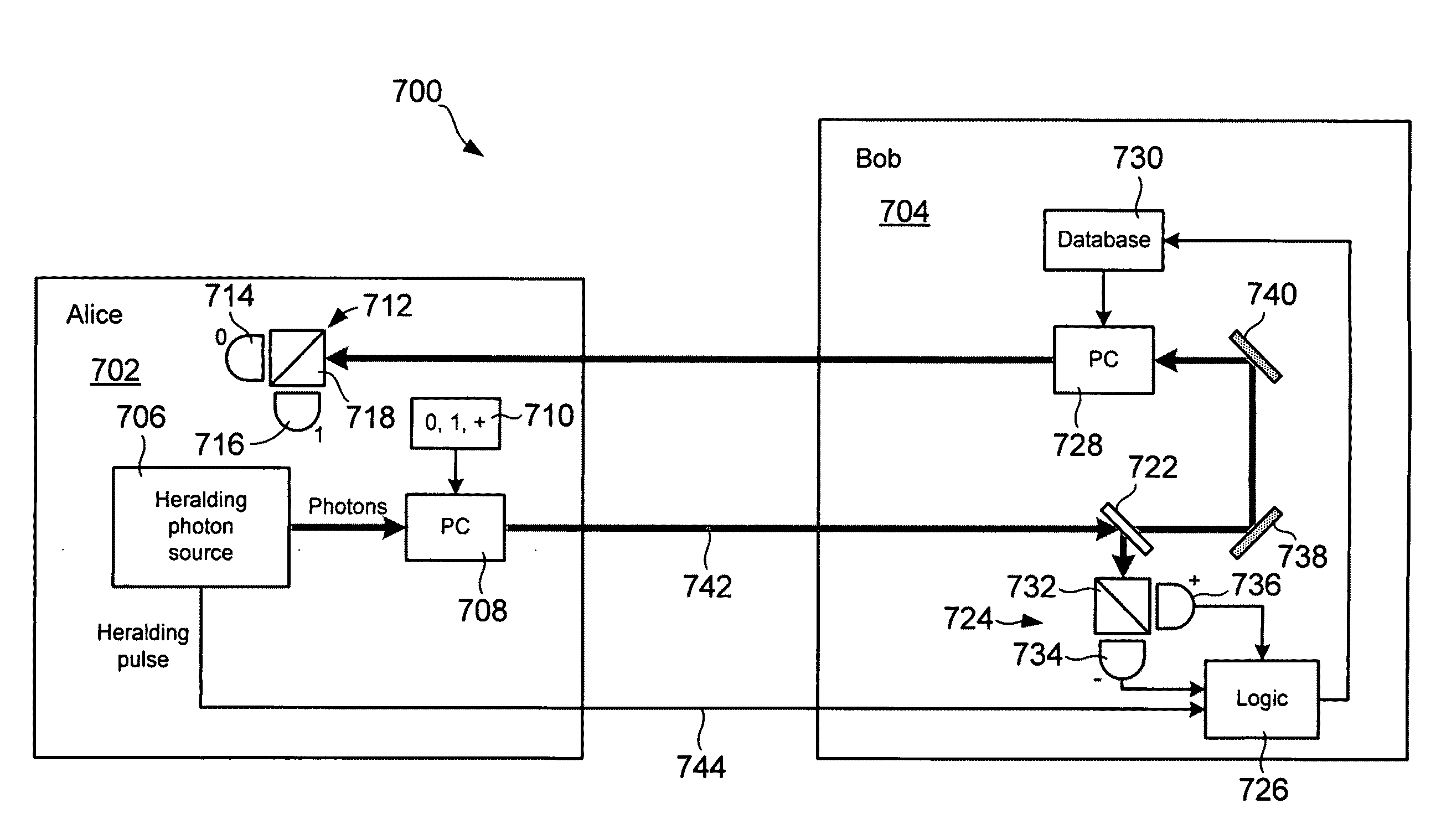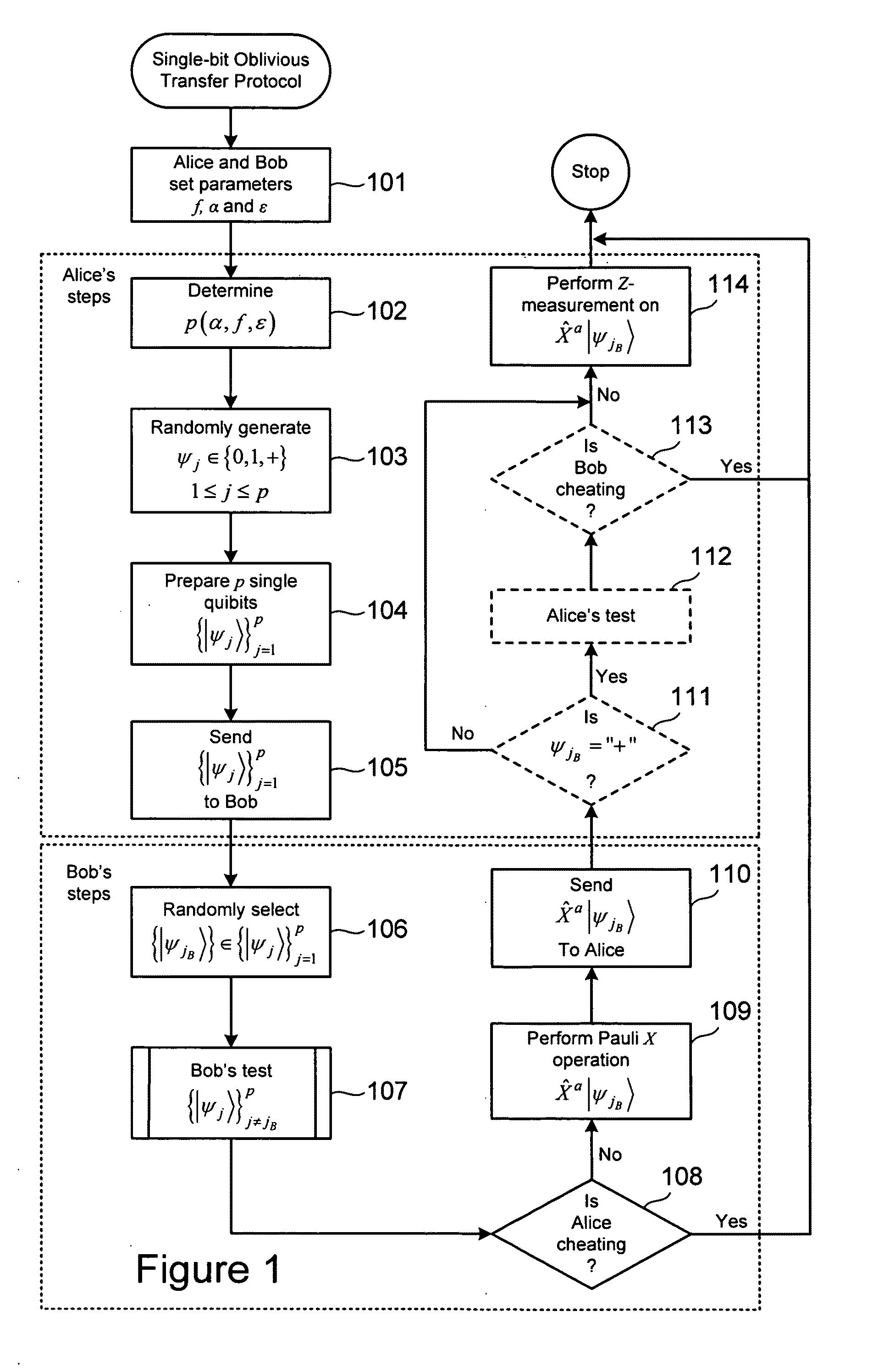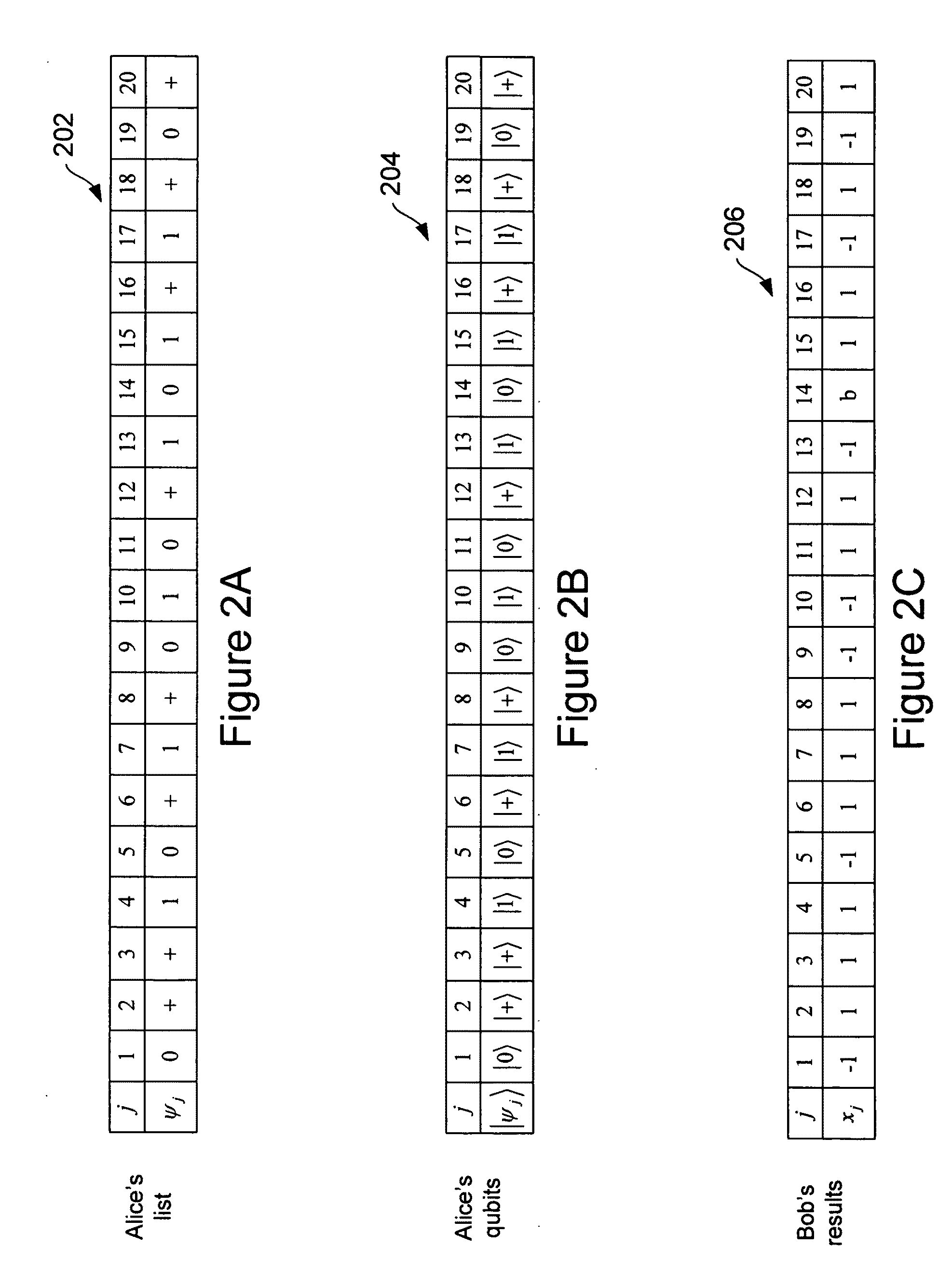Quantum-based oblivious transfer and private data sampling protocols and systems for performing the same
a technology of private data and oblivious transfer, applied in the field ofquantum-based oblivious transfer and private data sampling protocols, can solve the problems of third parties colluding and the transaction may not be completed,
- Summary
- Abstract
- Description
- Claims
- Application Information
AI Technical Summary
Benefits of technology
Problems solved by technology
Method used
Image
Examples
Embodiment Construction
[0016]In principle, public transactions over communication networks are attractive candidates for enhanced security provided by the laws of quantum mechanics. Unfortunately, most two party protocols have been proven insecure in both the classical and quantum regimes. For example, a general “no-go” theorem (“NGT”) has been demonstrated stating that no deterministic, one-sided, two-party protocol could be made secure (See “Insecurity of quantum secure computations” by H. K. Lo, Phys. Rev. A vol. 56, 1154 (1997)). Recently, however, it was demonstrated that oblivious transfer (“OT”) did not satisfy the assumptions behind the NGT, as demonstrated in “Oblivious transfer using quantum entanglement,” G. He, and Z. Wang, Phys Rev. A, vol. 73, 012331 (2006); and “Nonequivalence of two flavors of oblivious transfer at the quantum level.” G. He, and Z. Wang, Phys Rev. A, vol. 73, 044304 (2006). OT is a communication protocol involving two parties referred to as Alice and Bob, in which Alice tr...
PUM
 Login to View More
Login to View More Abstract
Description
Claims
Application Information
 Login to View More
Login to View More - R&D
- Intellectual Property
- Life Sciences
- Materials
- Tech Scout
- Unparalleled Data Quality
- Higher Quality Content
- 60% Fewer Hallucinations
Browse by: Latest US Patents, China's latest patents, Technical Efficacy Thesaurus, Application Domain, Technology Topic, Popular Technical Reports.
© 2025 PatSnap. All rights reserved.Legal|Privacy policy|Modern Slavery Act Transparency Statement|Sitemap|About US| Contact US: help@patsnap.com



